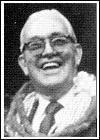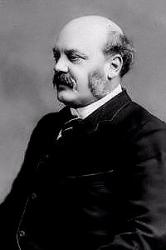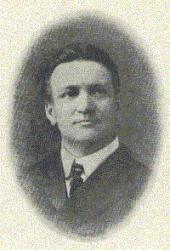Planning worship?
Check out our sister site, ZeteoSearch.org,
for 20+ additional resources related to your search.
- |
User Links
Person Results
‹ Return to hymnal



Export as CSV
Dorothy A. Thrupp
1779 - 1847 Person Name: Dorothy Ann Thrupp Hymnal Number: 35 Author of "Saviour, Like a Shepherd" in Rejoice and Sing Dorothy Ann Thrupp was born in London, June 10, 1779. She contributed some hymns, under the pseudonym of "Iota," to W. Carus Wilson's Friendly Visitor and his Children's Friend. Other hymns by her, signed "D.A.T.," appeared in Mrs. Herbert Mayo's Selection of Hymns and Poetry for the Use of Infant Schools and Nurseries, 1838. She was also the editor of Hymns for the Young, c. 1830, in which all the hymns were given anonymously. She died in London on December 15, 1847.
--The Hymnal 1940 Companion
================================
Thrupp, Dorothy Ann, daughter of Joseph Thrupp, of Paddington Green, was born at London, June 20, 1779 and died there on Dec. 14, 1847. Her hymns, a few of which have come into extensive use, were contributed to the Rev. W. Carus Wilson's Friendly Visitor and his Children's Friend, under the nom de plume of Iota; to Mrs. Herbert Mayo's Selection of Hymns and Poetry for the use of Infant Schools and Nurseries, 1838 (3rd ed. 1846, with change of title to A Sel. . . . of Infant and Juvenile Schools and Families), in which her signature is "D.A.T."; and also to the Hymns for the Young, which she herself edited for the Religious Tract Society circa 1830, 4th ed., 1836. In 1836 and 1837 she also published Thoughts for the Day (2nd series), in which she embodied many hymns which previously appeared in the Friendly Visitor. In addition to her hymns, which are annotated under their respective first lines there are also in common use:—
1. Come, Holy Spirit, come, 0 hear an infant's prayer. Child's Prayer. Appeared in Mrs. Mayo's Selection of Hymns and Poetry, 1838, No. 14, and signed "D.A.T."
2. God loves the little child that prays. God's love for Children. Given in Miss Thrupp's Hymns for the Young, 4th ed., 1836; and again in Mrs. Mayo's Selection of Hymns and Poetry&c, 2nd ed., 1840, and signed " D.A.T." It is sometimes given as "God loves the child that humbly prays."
3. Have you read the wondrous story? Life and Death of Jesus. This appeared anonymously in Miss Thrupp's Hymns for the Young, R. T. S., 1830, No. 12, in 5 stanzas of 4 lines. In Miss Thrupp's later publications this hymn is omitted, a fact which suggests that it was not her composition, but possibly that of a friend. It is in theLeeds Sunday School Union Hymn Book, 1833-78.
4. Let us sing with one accord. Praise of Jesus. This hymn is usually associated with Miss Thrupp's name, but on insufficient evidence. We find it in the 4th edition of her Hymns for the Young, 1836, and again in the 3rd ed. of Mrs. H. Mayo's Selection of Hymns and Poetry for the Use of Infant and Juvenile Schools, &c, 1846, and in both instances without signature. We know of no evidence which justifies us in ascribing the authorship with certainty to Miss Thrupp. The hymn is in the Leeds S. S. Union Hymn Book, 1833-78, and several others.
5. Poor and needy though I be. Divine Providence. Appeared in Miss Thrupp's Hymns for the Young, 4th ed., 1836, No. 22; and again in Mrs. Mayo's Selection of Hymns and Poetry>, &c, 2nd ed., 1840, and signed "D.A.T."
6. See, my child, the mighty ocean. Love of God compared to the Sea. Given in the R. T. S.'s Hymns for the Young, 4th ed., 1836, No. 26, and in Mrs. Mayo's Selection of Hymns and Poetry, &c, 1st ed., 1838, and signed "D.A. T." In Kennedy, 1863, it begins "Have you seen the mighty ocean."
7. Thou Guardian of my earliest days. Jesus the Children's Friend. This hymn we have traced to her Hymns for the Young, 4th ed., 1836. It is sometimes given as “Thou Guardian of our earliest days."
8. What a strange and wondrous story. Life and Death of Jesus. This hymn is found without signature in her Hymns for the Young, 4th ed., 1836, and again in Mrs. H. Mayo's Selection of Hys. and Poetry, 1838, No. 173, in 4 st. of 4 1, We have found no authority for ascribing it to Miss Thrupp.
9. What led the Son of God? Love of God in Christ. This appeared anonymously in her Hymns for the Young, 1830, and again in the Leeds S. S. Union Hymn Book, 1833. In modern collections it is attributed to Miss Thrupp, on the ground that it is found in the Hys. for the Young, which she edited.
10. Who are they in heaven who stand? All Saints. Published in Mrs. Mayo's Selection of Hys. and Poetry, 3rd ed., 1846, No. 64, in 5 stanzas of 4 lines, and signed A. D.T." It is in the Prim. Methodist Sunday School Hymn Book, 1879, and others.
Several additional hymns to those named above have also been attributed to Miss Thrupp on insufficient authority. This has probably arisen out of the fact that all the hymns in the Hymns for the Young, including her own, were given anonymously.
-- Excerpts from John Julian, Dictionary of Hymnology (1907)
Dorothy A. Thrupp
Thomas Jarman
1776 - 1861 Person Name: T. Jarman Hymnal Number: 71 Composer of "[Oh, for a thousand tongues to sing]" in Rejoice and Sing Thomas Jarman was born on 21st December 1776 in Clipston, a small village near the northern border of the County of Northampton. His father was not only a Baptist lay preacher, but also a tailor, and Thomas was brought up in the same trade, although his brother, John, followed his father’s calling to become a minister.
His natural taste for music, however, considerably interfered with his work, and he was frequently reduced to dire straits, from which only the extreme liberality of his publishers relieved him. He was a man of fine, commanding presence, but self-willed, and endowed with a considerable gift of irony, as choirs frequently found to their cost. Weston quotes from Kant that Jarman neglected his work and ‘this kept him poor and soured his temper’.
He joined the choir of the Baptist chapel in his native village when quite a youth, and soon became the choirmaster there. He adopted music as a profession (with occasional returns to his old trade), and was engaged as teacher of harmony and singing in many of the neighbouring villages. He was a successful choir-trainer, spending several years at Leamington, and conducted concerts as well as services, for which he was ‘constantly composing works’. The village choir festival held under his direction at Naseby, in 1837, is said to have been the talk of the district for long after. He spent some six or seven years at Leamington, during which time he enjoyed the friendship of C. Rider, a wealthy Methodist who did much good for the psalmody of Lancashire and elsewhere some fifty or sixty years ago.
Jarman published an enormous quantity of music, including over six hundred hymn-tunes, besides anthems, services, and similar pieces.
Amongst his many anthems written for special occasions there is one for the opening of the new Baptist chapel at Clipston. Another is a MAGNIFICAT for Dr Marsh's Episcopal chapel at Leamington, where Thomas Jarman was called to assist the quire in their study and performance of psalmody.
Thomas Jarman lived to the good old age of eighty-five, dying in 1861, and lies buried in the graveyard attached to the Baptist chapel at Clipston in Northants.
--immanuelsground.com/composers/ (excerpts)
Thomas Jarman
Wendell P. Loveless

1892 - 1987 Hymnal Number: 224 Composer of "[Lead me to some soul today]" in Rejoice and Sing Rv Wendell Phillips Loveless USA 1892-1987, Born in Wheaton, IL, he first engaged in business in Chicago. In 1914 he became a member of an entertainment group that toured the U.S. on the Chatauqua circuit. Spending six years with the group he learned voice, piano, dramatics, and MC duties, later managing the group. He later used these talents in Christian ministry. In 1917 he married Velma Stone, and they had three children: Robert, David, and Wendell Jr. He was a Lieutenant in the Marine Corps during WWI. He was converted through reading the Bible at home. He joined the Moody Bible Institute (MBI) in 1926, first as business manager of the extension department. He later became director of the Moody Bible Institute radio station WMBI in Chicago from 1926-1947. He then became an itinerant Bible teacher. He later pastored the Wheaton Evangelical Free Church, Community Church in Boca Raton, FL, and First Chinese Church of Christ in Honolulu, HI, continuing his radio ministry in the last two locations (also managing station KAIM Honolulu). In 1960 he assigned all his copyrights to Hope Publishing Company. He wrote popular songs and choruses, many found in hymnals published by Hope, and some translated into other languages. He authored several books: “Glimpses of Christ n Psalm IX” (1937); “Sunrise meditations” (1940); “New radio songs & choruses of the gospel #3” (1940); New radio songs & choruses of the gospel #4” (1942); “Little talks on great words” (1942?); “Christ and the believer in the Song of Songs” (1945); “Plain talks on practical truths” (1945); “New sunrise meditations” (1945); “Manual of gospel broadcasting” (1946); “Plain talks on Romans” (1946); “New radio songs & choruses of the gospel #5” (1946). He died in Honolulu, HI. He was an author, compiler, performer, editor, narrator, composer, actor, and writer.
John Perry
Wendell P. Loveless
A. L. Peace

1844 - 1912 Person Name: Albert L. Peace Hymnal Number: 11 Composer of "[Dear Lord, we give our youth to Thee]" in Rejoice and Sing Albert Lister Peace DMus United Kingdom 1844-1912. Born at Huddersfield, Yorkshire, England, son of a warehouseman and woolstapler, he was extremely gifted as a musician, largely self-taught, playing the organ at Holmfirth Parish Church near Huddersfield at age nine. He married Margaret Martin Steel Gilchrist, and they had three children: Lister, Archibald, and Margaret. In 1865 he was appointed organist of Trinity Congregational Church in Glasgow, Scotland. He obtained his doctorate degree from the University of Oxford in 1875. He became organist at Glasgow Cathedral in 1879. In 1897 he succeeded William Best as organist at St George’s Hall, Liverpool. In later years he was in much demand to play the organ in recitals. He did so at Canterbury Cathedral (1886), Victoria Hall, Hanley, Stoke-on-Trent (1888), and Newcastle Cathedral (1891). He composed orchestrations, sonatas, cantatas, and concert and church service anthems. He was an arranger, author, and editor. He died at Blundelsands, Liverpool, England.
John Perry
A. L. Peace
John Wyeth
1770 - 1858 Hymnal Number: 24 Composer of "[Come, Thou Fount of ev'ry blessing]" in Rejoice and Sing
John Wyeth
William W. Walford
1772 - 1850 Person Name: W. W. Walford Hymnal Number: 259 Author of "Sweet Hour of Prayer" in Rejoice and Sing William W. Walford, a blind preacher of England, is the author of the hymn beginning "Sweet hour of prayer." This hymn first appeared in print in the New York Observer September 13, 1845. The contributor who furnished the hymn says:
"During my residence at Coleshill, Warwickshire, England, I became acquainted with W. W. Walford, the blind preacher, a man of obscure birth and connections and no education, but of strong mind and most retentive memory. In the pulpit he never failed to select a lesson well adapted to his subject, giving chapter and verse with unerring precision, and scarcely ever misplacing a word in his repetition of the Psalms, every part of the New Testament, the prophecies, and some of the histories, so as to have the reputation of knowing the whole Bible by heart."
Rev. Thomas Salmon, who was settled as the pastor of the Congregational Church at Coleshill in 1838, remained until 1842, and then removed to the United States, is believed to have been the contributor who says of the hymn: "I rapidly copied the lines with my pencil as he uttered them, and send them for insertion in the Observer if you think them worthy of preservation."
From: Nutter, C. S., & Tillett, W. F. (1911). The hymns and hymn writers of the church, an annotated edition of The Methodist hymnal. New York: Methodist Book Concern.
William W. Walford
Marianne Hearn
1834 - 1909 Hymnal Number: 107 Author of "Just as I Am, Thine Own to Be" in Rejoice and Sing See Marianne Farningham.
Marianne Hearn
E. S. Elliott
1836 - 1897 Person Name: Emily E. S. Elliott Hymnal Number: 176 Author of "Thou Didst Leave Thy Throne" in Rejoice and Sing Elliott, Emily Elizabeth Steele, third daughter of the late Rev. E. B. Elliott, of Brighton, author of the Horae Apocalypticae was born at Brighton, and now [1887] lives in London. She has contributed hymns, some of which have obtained wide acceptance, to the choir manuals, and Additional Hymns, 1866 (Nos. 8, 34) for use in St. Mark's Church, Brighton; to the Church Missionary Juvenile Instructor, which she edited for six years. Her Chimes of Consecration, a volume of 70 hymns and poems, was published in 1873, and her Chimes for Daily Service in 1880. The latter contains 71 hymns in two parts. The second part of 48 hymns is also published separately as Under the Pillow, for use as a cheap large type hymn-book (with corresponding tune-book) for hospitals and infirmaries and the sick generally. Her hymn, “Let us keep the feast" (Holy Communion), was first published in The Feast of Sacrifice and The Feast of 'Remembrance, 1865, in 5 stanzas of 5 lines. [Rev. James Mearns, M.A.]
-- John Julian, Dictionary of Hymnology (1907)
=================
Elliott, Emily E. 8., p. 328, ii. The following additional hymns by Miss Elliott have recently come into common use:—
1. Brothers, sisters, pray for us. [Missionaries' Farewell.] Appeared in the C. M. Gleaner, Sept. 1896, p. 14?, and entitled "The Missionaries' Departing Petition." In the Church Miss. Hymn Book, 1899.
2. Rabboni, Master, we have heard. [Consecration of Self to Duty.] In theC. M. Gleaner, Dec. 1895, p. 195. It was sung for the first time at the Gleaners' Union Anniversary, 1895. In the Church Miss. Hymn Book, 1899.
3. Full consecration! heart and spirit yielded. [Full Consecration.] Given in Hymns of Consecration and Faith, 1902.
4. They come and go, the seasons fair, [Second Advent.] In the C. M. Gleaner, Nov. 1891, p. 172, as "What will be when the King comes?" It was sung for the first time at the Gleaners' Union Anniversary, Oct. 30, 1891. In the Church Miss. Hymn Book, 1899.
Miss Elliott was born at Brighton, July 22, 1836, and died at Mildmay, London, Aug. 3, 1897.
--John Julian, Dictionary of Hymnology, New Supplement (1907)
E. S. Elliott
James G. Walton
1821 - 1905 Person Name: J. G. Walton Hymnal Number: 109 Composer of "[Faith of our fathers, living still]" in Rejoice and Sing Born: February 19, 1821, Clitheroe, Lancashire, England.
Died: September 1, 1905, Bradford, New York.
Little is known of Walton’s life. His works include:
Plain Song Music for the Holy Communion Office, 1874 (editor)
Music: ST. CATHERINE
--www.hymntime.com/tch
James G. Walton
P. P. Bilhorn

1865 - 1936 Person Name: Peter P. Bilhorn Hymnal Number: 138 Composer of "[I will sing the wondrous story]" in Rejoice and Sing Pseudonyms: W. Ferris Britcher, Irene Durfee; C. Ferris Holden, P. H. Roblin (a anagram of his name)
================
Peter Philip Bilhorn was born, in Mendota, IL. His father died in the Civil War 3 months before he was born. His early life was not easy. At age 8, he had to leave school to help support the family. At age 15, living in Chicago, he had a great singing voice and sang in German beer gardens there. At this time, he and his brother also formed the Eureka Wagon & Carriage Works in Chicago, IL. At 18 Peter became involved in gospel music, studying under George F. Root and George C. Stebbins. He traveled to the Dakotas and spent some time sharing the gospel with cowboys there. He traveled extensively with D. L. Moody, and was Billy Sunday's song leader on evangelistic endeavors. His evangelistic work took him into all the states of the Union, Great Britain, and other foreign countries. In London he conducted a 4000 voice choir in the Crystal Palace, and Queen Victoria invited him to sing in Buckinghm Palace. He wrote some 2000 gospel songs in his lifetime. He also invented a folding portable telescoping pump organ, weighing 16 lbs. It could be set up in about a minute. He used it at revivals in the late 19th century. He founded the Bilhorn Folding Organ Company in Chicago. IL, and his organ was so popular it was sold all over the world. He edited 10 hymnals and published 11 gospel songbooks. He died in Los Angeles, CA, in 1936.
John Perry
P. P. Bilhorn


 My Starred Hymns
My Starred Hymns


